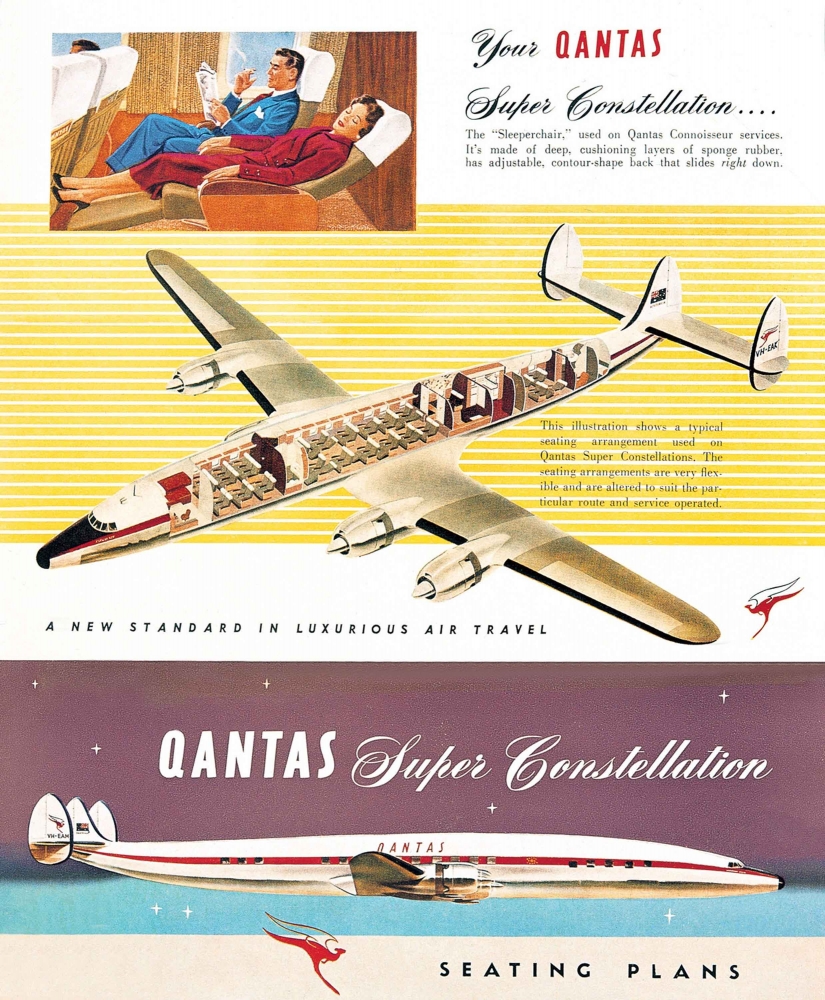QANTAS Constellations Were Super
28 July, 2015
3 min read
Gazing at an airliner’s cabin today, passengers are treated to the best of contemporary interior and industrial design. A pleasurable combination of ultra-modern materials and fashionable colors aboard an airliner evokes the comfort, convenience, and high technology of the Modern Age. Looking at the cabin of a 1950s-vintage airliner, we hearken back to a time when the latest vogue in interior decor featured stylish amenities like rich wood paneling, fabric window curtains and wallpapered panels. Each generation had its own ‘look’ and was considered the best of the best.
While the ultimate in airborne luxury today may be found on airliners like Boeing’s 777-300ER or the Airbus A380, during the romantic age of piston-powered flight, airplanes with names like Stratocruiser, Seven Seas, and Jetstream enticed world travelers. For exuding true elegance in aviation back then, perhaps there was no greater airplane than Lockheed’s remarkable Constellation. Beginning life as a World War II Army transport, this graceful-looking triple-tailed skyliner entered service in 1946, and was flown by countless airlines and freight carriers well into the 1960s.
Perhaps the most recognized model of the Constellation was the radar-nose “Super-G” which brought true intercontinental service to passengers of the world’s leading international airlines, chief among them, QANTAS. Used on routes from Australia to major cities all around the world, QANTAS “Super Gs” ushered-in a new era of airborne luxury with “Connoisseur Service.” What better way to show the interior attributes of this elegant new 335-mph airliner than a fold-out seating plan featuring a color cutaway of the 48-seat-configured QANTAS Connie inflight.
Cutaways were used from the early days of commercial aviation for showing passengers what they could expect to find once aboard the airplane. By visually peeling away the aircraft’s external skins, one could peek inside and view the location of seats, galleys, closets, lavatories, lounges, and other features of air travel of that era. Some cutaway illustrations even included a glimpse into the airplane’s cockpit, or showed the internal structure of the wings, tail, and engines.
The plethora of digital airborne conveniences enjoyed by today’s passengers stands in stark contrast to inflight entertainment available during the 1950s. To wile away those long, droning, smoke-filled hours aloft in piston-powered airliners of yore, one would spend time writing post cards or letters on handsome official airline stationary, reading books and magazines, or even playing cards with other passengers. What was so cool about cutaways back then is that just by looking at them, prospective air travelers could picture themselves enjoying all those activities while seated inside the airliner depicted.
Get the latest news and updates straight to your inbox
No spam, no hassle, no fuss, just airline news direct to you.
By joining our newsletter, you agree to our Privacy Policy
Find us on social media
Comments
No comments yet, be the first to write one.


